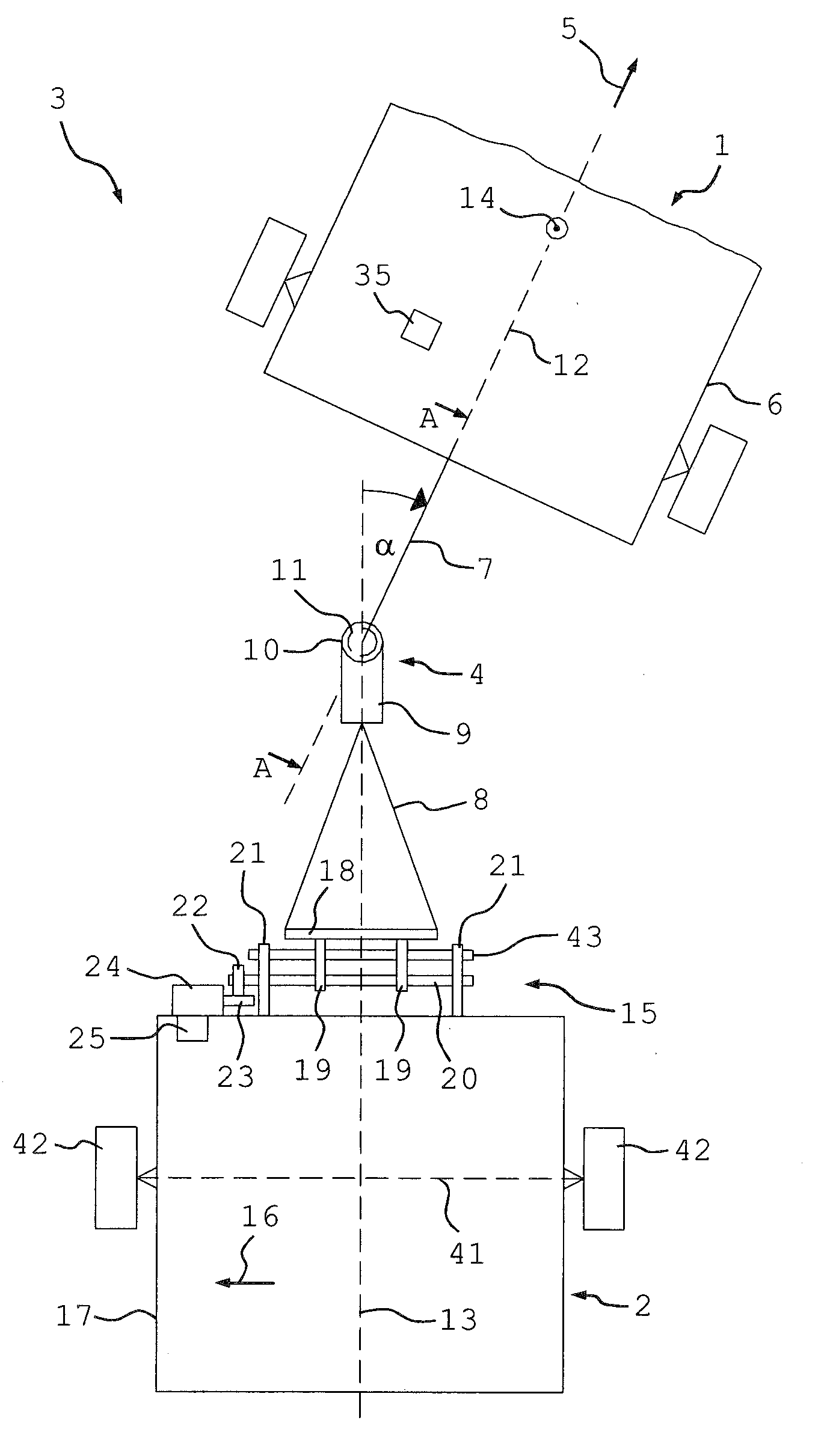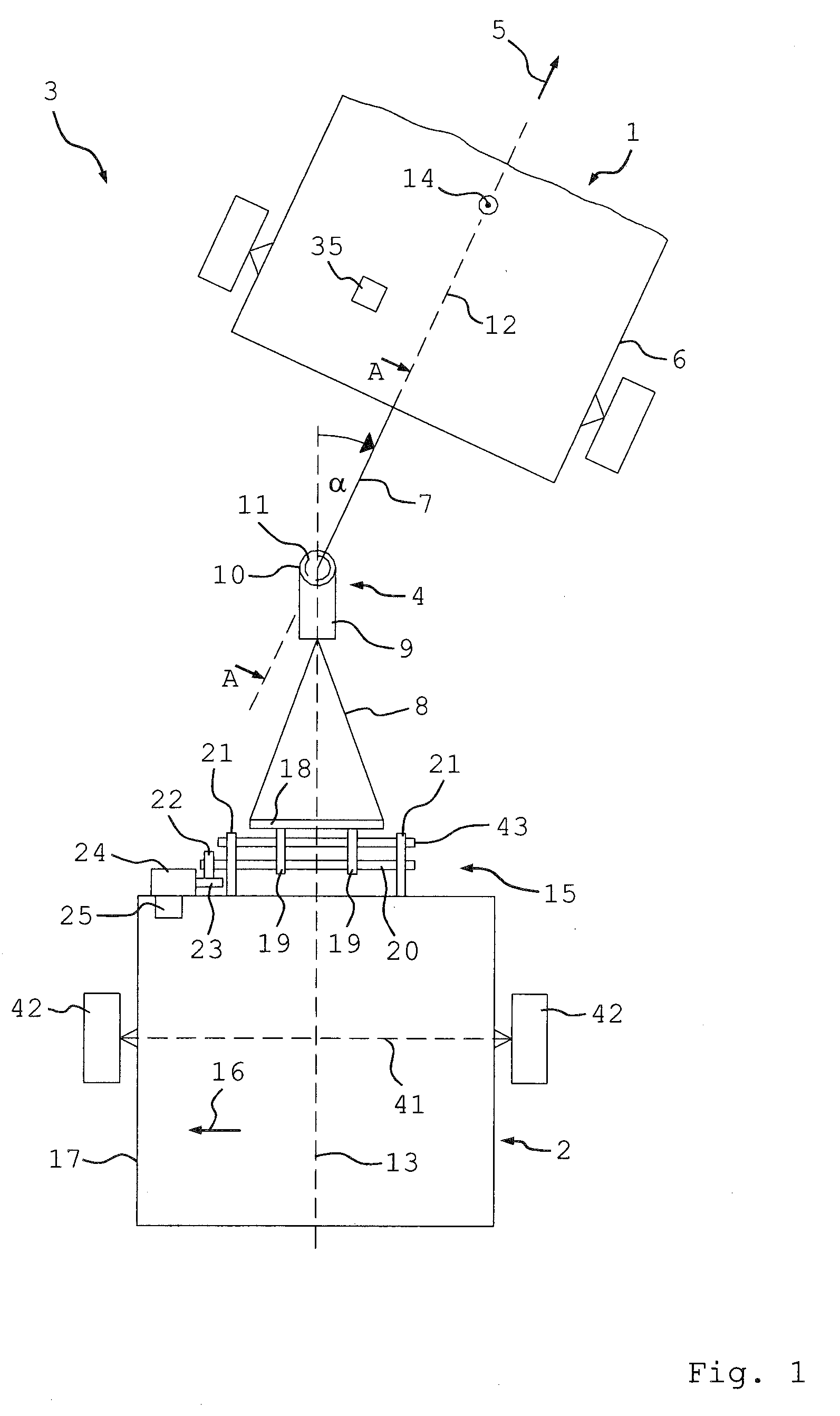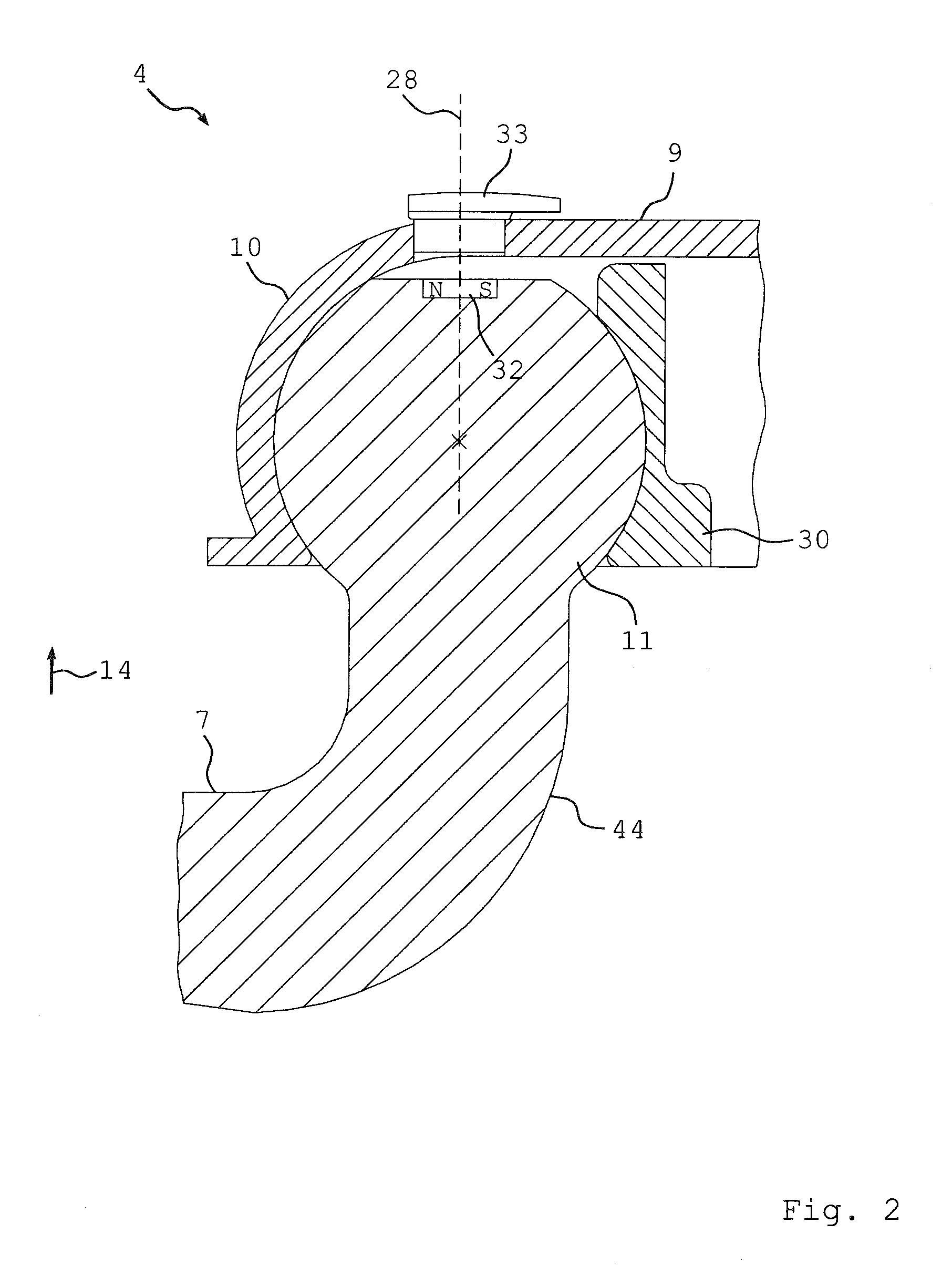Steering Arrangement for a Trailer
- Summary
- Abstract
- Description
- Claims
- Application Information
AI Technical Summary
Benefits of technology
Problems solved by technology
Method used
Image
Examples
Embodiment Construction
[0028]FIG. 1 shows a top view on a combination 3 formed of a tractor 1 and a trailer 2, wherein the tractor 1 is connected with the trailer 2 by way of a trailer coupling 4 in an articulated fashion. The reference symbol 5 indicates the conventional forward travel direction of the tractor 1. The trailer coupling 4 includes a coupling member 7 which is rigidly connected with the chassis 6 of the tractor and a coupling lock 9 which is attached to the hitch 8 of the trailer 2. The coupling lock 9 includes a ball socket 10, in which a schematically illustrated hitch ball 11 arranged on the rearward end of the coupling member 7 is located, as viewed in the travel direction 5. The coupling lock 9 also forms a forward end of the hitch 8, as viewed in the travel direction 5.
[0029]The angle α between the longitudinal axis 12 of the tractor 1 and the longitudinal axis 13 of the trailer 2 forms the so-called articulation angle of the composition 3. The articulation angle α is, in particular, l...
PUM
 Login to View More
Login to View More Abstract
Description
Claims
Application Information
 Login to View More
Login to View More - R&D
- Intellectual Property
- Life Sciences
- Materials
- Tech Scout
- Unparalleled Data Quality
- Higher Quality Content
- 60% Fewer Hallucinations
Browse by: Latest US Patents, China's latest patents, Technical Efficacy Thesaurus, Application Domain, Technology Topic, Popular Technical Reports.
© 2025 PatSnap. All rights reserved.Legal|Privacy policy|Modern Slavery Act Transparency Statement|Sitemap|About US| Contact US: help@patsnap.com



